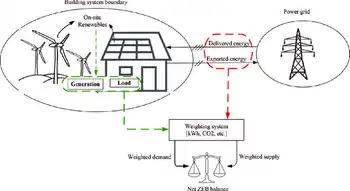Chinese wind to increase five-fold
CHINA - China's wind power capacity will increase more than five-fold over the next decade from 2009, as the country steps up its drive to develop clean energy.
Total installed wind power capacity will reach at least 150 gigawatts by 2020 compared with 25.8 gigawatts at the end of 2009, according to the China Wind Power Outlook 2010 report.
A more ambitious forecast by the publishers of the report - Greenpeace, the Chinese Renewable Energy Industries Association CREIA and the Global Wind Energy Council GWEC - is 230 gigawatts over the next 10 years.
That would be equal to 13 times the capacity of the Three Gorges Dam and could cut 410 million tonnes of carbon dioxide emissions, or 150 million tonnes of coal consumption, said Yang Ailun of Greenpeace China.
In a more optimistic forecast, GWEC itself predicts China's wind power capacity could reach 253 gigawatts by 2020.
"China is at a crossroads," said Yang, head of the Climate and Energy Team of Greenpeace.
"It can choose between the dirty, dangerous world of coal and fossil fuels, or the new, clean future promised by wind. The answer is obvious."
China now depends on coal for nearly 70 percent of its energy consumption.
Experts see the growth of the wind power industry in China as a bright spot in the country's efforts to curb growth in its world-leading greenhouse gas emissions.
China, which ranked second in the world in installed wind generating capacity in 2009, pledged last year to slow the growth in those emissions by reducing energy consumption per unit of GDP by 40-45 percent from 2005 levels by 2020.
That is essentially a vow of greater energy efficiency that would likely, however, see emissions continue to increase.
Officials have so far rejected suggestions that Beijing commit to emissions cuts and outside verification.
Related News

Can Canada actually produce enough clean electricity to power a net-zero grid by 2050?
TORONTO - By Merran Smith and Mark Zacharias
Canada is an electricity heavyweight. In addition to being the world’s sixth-largest electricity producer and third-largest electricity exporter, Canada can boast an electricity grid that is now 83 per cent emission-free, not to mention residential electricity rates that are the cheapest in the Group of Seven countries.
Indeed, on the face of it, the country’s clean electricity system appears poised for success. With an abundance of sunshine and blustery plains, Alberta and Saskatchewan have wind- and solar-power potential that rivals the best on the continent. Meanwhile, British Columbia, Manitoba, Quebec, and Newfoundland and Labrador…




